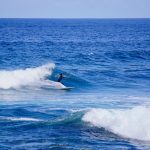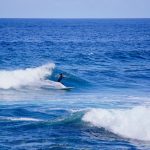Download links
How to install Mastering the Art of Parkour with OG777 APK?
1. Tap the downloaded Mastering the Art of Parkour with OG777 APK file.
2. Touch install.
3. Follow the steps on the screen.
Description
Parkour, often described as the art of movement, has its roots deeply embedded in the military training of the French army during the late 20th century. The discipline was significantly influenced by the work of Georges Hébert, a French naval officer who developed a training method known as “méthode naturelle” in the early 1900s. Hébert’s philosophy emphasized natural movement and physical fitness, advocating for a holistic approach to training that included running, climbing, swimming, and jumping.
His ideas laid the groundwork for what would later evolve into parkour, as they encouraged individuals to navigate their environment with agility and efficiency. The term “parkour” itself was coined in the late 1980s by David Belle, a French traceur who is often credited as one of the founders of the discipline. Belle was inspired by his father’s training in Hébert’s methodology and sought to adapt these principles to urban environments.
Alongside his friends, he began to explore the possibilities of movement through the cityscape, using walls, railings, and other structures as obstacles to overcome. This exploration led to the establishment of a community that celebrated creativity in movement, which would eventually gain international recognition through videos and social media platforms in the early 2000s. As parkour spread globally, it began to evolve, incorporating elements from various disciplines such as gymnastics, martial arts, and dance, further enriching its practice.
Key Takeaways
- Parkour originated in France in the 1980s as a training discipline for military obstacle course training.
- The philosophy of parkour emphasizes self-improvement, adaptability, and overcoming mental and physical obstacles.
- Training techniques for parkour focus on developing strength, agility, and precision through exercises like plyometrics and obstacle courses.
- Overcoming obstacles in parkour requires a combination of physical skill, mental focus, and creative problem-solving.
- Safety and injury prevention in parkour involve proper warm-up, technique practice, and knowing one’s limits to avoid common injuries like sprains and strains.
The Philosophy of Parkour: Exploring the mindset and principles behind mastering the art of movement
The Urban Landscape as a Metaphor for Life
Navigating through urban landscapes becomes a metaphor for life’s challenges, where each leap or climb represents a personal struggle that can be conquered with determination and creativity. The philosophy of parkour emphasizes the concept of flow, which is about fluidity in movement and the seamless transition between different techniques.
The Flow State: A Meditative Experience
Achieving this flow state requires not only physical skill but also mental clarity and focus. Practitioners become fully immersed in their environment, making split-second decisions about how to approach obstacles. This heightened sense of awareness extends beyond physical movement, fostering a deeper connection with one’s body and environment.
Cultivating Mindfulness in Everyday Life
This mindfulness can be beneficial in various aspects of life, promoting a deeper understanding of oneself and the environment. By cultivating awareness of their surroundings, practitioners can develop a greater sense of self-awareness, which can be applied to everyday challenges and obstacles.
Training Techniques: Learning the essential skills and drills to improve strength, agility, and precision

To excel in parkour, practitioners must develop a diverse set of skills that encompass strength, agility, balance, and precision. Training techniques often begin with foundational exercises that build core strength and overall fitness. Bodyweight exercises such as push-ups, pull-ups, squats, and planks are integral to developing the muscular endurance necessary for executing parkour movements.
These exercises not only enhance physical capabilities but also instill discipline and consistency in training routines. In addition to strength training, agility drills play a crucial role in preparing traceurs for the dynamic movements required in parkour. Plyometric exercises like box jumps, burpees, and lateral hops help improve explosive power and quickness.
Practitioners often incorporate obstacle courses into their training sessions to simulate real-world environments where they can practice vaults, rolls, and precision jumps. These courses can be designed using various elements such as benches, walls, and railings to create a diverse range of challenges that mimic urban landscapes. By repeatedly practicing these movements in controlled settings, traceurs can refine their techniques and build confidence before attempting them in more complex environments.
Overcoming Obstacles: How to approach and conquer physical and mental challenges in parkour
| Obstacle | Physical Challenge | Mental Challenge |
|---|---|---|
| Wall | Jumping and climbing | Overcoming fear of height |
| Railings | Balancing and precision | Building confidence |
| Gaps | Jumping and landing | Conquering fear of falling |
| Barriers | Running and vaulting | Developing quick decision-making |
The essence of parkour lies in overcoming obstacles—both physical barriers in the environment and mental hurdles within oneself. When faced with a challenging jump or climb, traceurs must first assess their capabilities and determine the best approach. This process often involves breaking down the obstacle into manageable components.
For instance, if a practitioner is confronted with a high wall, they might first practice running up to it at various speeds or work on their wall runs before attempting to scale it entirely. This methodical approach not only enhances physical skills but also builds mental resilience. Mental challenges can be just as daunting as physical ones.
Fear of failure or injury can hinder progress and prevent practitioners from attempting new movements. To combat this fear, many traceurs adopt visualization techniques where they mentally rehearse their movements before executing them physically. This practice helps create a sense of familiarity with the obstacle and reduces anxiety associated with attempting it.
Additionally, fostering a supportive community is vital; practicing with others allows for shared experiences and encouragement that can motivate individuals to push beyond their comfort zones.
Safety and Injury Prevention: Tips for staying safe and avoiding common injuries while practicing parkour
Safety is paramount in parkour training, as the discipline inherently involves risk due to its dynamic nature. To minimize the likelihood of injury, practitioners should prioritize proper warm-up routines that prepare their bodies for intense physical activity. Dynamic stretching exercises that target major muscle groups can enhance flexibility and reduce stiffness, making it easier to execute movements safely.
Furthermore, incorporating cooldown sessions post-training helps alleviate muscle soreness and promotes recovery.
Beginners should start with basic movements and gradually progress to more complex techniques as their skills develop.
It is essential to practice in safe environments—preferably on soft surfaces like grass or mats—when learning new skills or attempting higher jumps. Additionally, wearing appropriate footwear that provides adequate grip and support can significantly reduce the risk of slips or falls during training sessions. Practitioners should also be aware of common injuries associated with parkour, such as sprains or strains, and take proactive measures to strengthen vulnerable areas through targeted exercises.
Taking it to the Next Level: Advanced tips and strategies for pushing the boundaries and achieving mastery in parkour

Embracing Creativity and Setting Goals
By embracing creativity in movement, traceurs can discover unique ways to navigate obstacles that resonate with their personal expression. Additionally, setting specific goals can provide direction for advanced training. Whether aiming to master a particular trick or conquer a challenging course, having clear objectives helps maintain motivation and focus during practice sessions.
Self-Assessment and Community Involvement
Engaging in regular self-assessment allows practitioners to track their progress over time and identify areas for improvement. Furthermore, participating in workshops or training camps led by experienced traceurs can offer valuable insights into advanced techniques while fostering connections within the parkour community.
Continuous Challenge and Growth
By continuously challenging themselves and seeking new experiences, practitioners can push the boundaries of their abilities and achieve greater heights in their parkour journey.
FAQs
What is Parkour?
Parkour is a physical discipline that involves moving through an environment in a fluid and efficient manner, using only the human body and the surroundings to propel oneself.
What are the benefits of practicing Parkour?
Practicing Parkour can improve strength, agility, balance, and coordination. It also promotes creativity, problem-solving skills, and mental focus.
Is Parkour dangerous?
Like any physical activity, Parkour can be dangerous if not practiced with proper technique and safety measures. It is important to receive proper training and start with the basics before attempting more advanced moves.
Can anyone practice Parkour?
Parkour can be practiced by people of all ages and fitness levels. However, it is important to start with the basics and progress at a pace that is comfortable for the individual.
Are there specific clothing or gear required for Parkour?
While there is no specific clothing or gear required for Parkour, it is recommended to wear comfortable and flexible clothing that allows for freedom of movement. Some practitioners may choose to wear specialized shoes for better grip and support.





